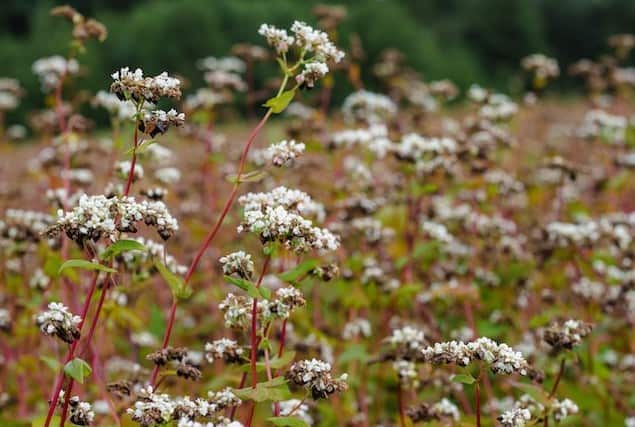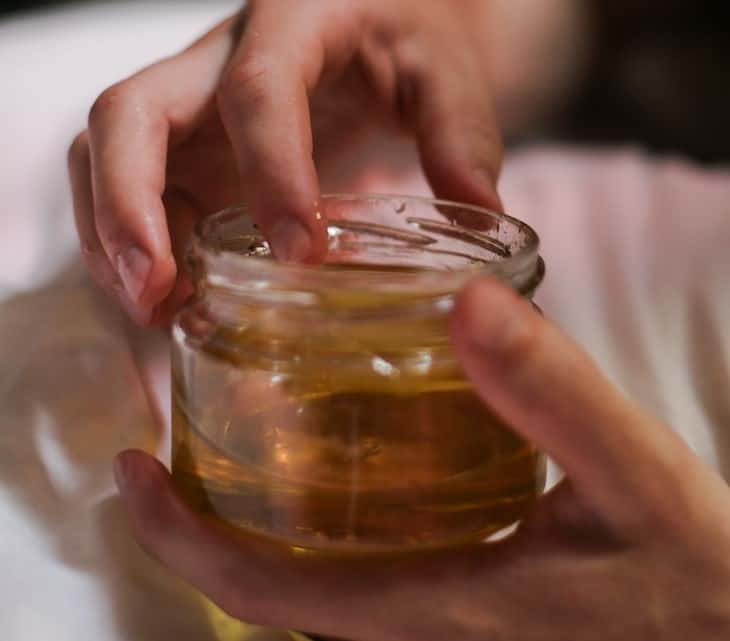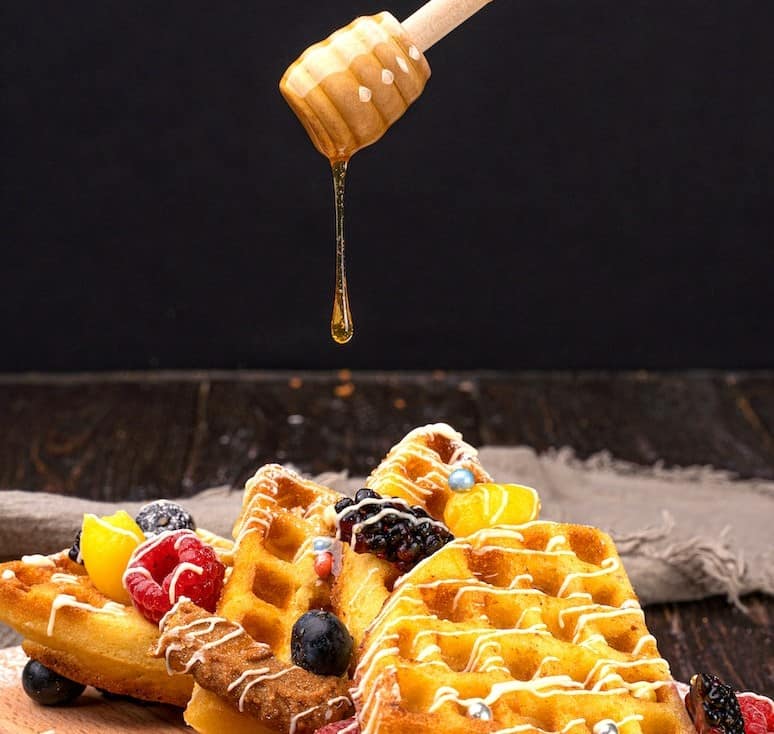One variety of honey that stands out among its plentiful counterparts is Buckwheat Honey.
Many people do not have any idea that even if Buckwheat has “wheat” in its name, it is not in any way like the latter. The honey produced from the nectar of this particular plant is remarkably distinctive, utterly delicious, and advantageous to your health.
Let us look at everything you need to know about this honey produced from the Buckwheat plant.
The Buckwheat Plant
Buckwheat is a short-season plant that is neither grass nor wheat. Rather, it is a fruit related to the rhubarb plant and sorrel.
One of the first crops cultivated in the United States when Dutch colonies settled in North America, these plants thrive along the Hudson River. It is sometimes called “beech wheat” because its seeds resemble the triangular Beech Tree nuts.
Beekeepers primarily cultivate this plant in the Northern American states such as New York, Ohio, Minnesota, Pennsylvania, and Wisconsin.
Farmers grow beech wheat primarily as a ground cover to add nitrogen to the soil and improve its fertility. These plants also help manage soil erosion and out-compete weeds.

Buckwheat is a “pseudocereal.” Just like quinoa and chia, people harvest their seeds and use them as cereals. Some grind and use them as gluten-free buckwheat flour.
But before these plants produce seeds, they boast delicate flowers that are irresistible to bees. Honeybees truly love the smell of the Buckwheat flowers during the blooming season in August onwards.
Of course, besides the smell, the nectar of the tiny flowers strongly attracts the bees.
To produce monofloral honey from these plants, our industrious friends work extra hours to collect enough nectar.
In the United States, a beekeeper works with some farmers for the placement of hives on large fields of buckwheat. The farmers benefit from this setup as the honeybees pollinate the blossoms for a more abundant harvest of seeds.
Beekeepers achieve the advantage of having enough Buckwheat nectar to produce raw buckwheat honey.
Health Benefits of Buckwheat Honey
Several research studies have shown the wide array of health benefits of Buckwheat Honey. Primarily, it promotes healing in the body and supports immune function.
Raw buckwheat honey helps subdue coughs, soothe sore throats, and treat upper respiratory infections like colds.
With high sugar and low pH contents, it helps stop the growth of bacteria and other microbes. Hence, some traditional medicine practitioners use it for wound treatment. It hastens healing and minimizes scarring. Simply apply a small amount directly to the wound and cover it with a clean bandage.
Buckwheat honey shows promise as a skincare treatment or part of one’s daily regimen as it helps protect the skin. It is recommended to use dark honey for acne, burns, and other skin issues because of its antibacterial properties.

Due to its low sugar content, raw Buckwheat honey also aids with the reduction of cholesterol or blood sugar levels.
Antioxidants created from active flavonoids and other phenolic compounds in honey help with blood pressure. Being anti-inflammatory, it lessens the chance of arterial hypertension and other cardiovascular diseases like atherosclerosis and heart attack.
This honey can aid in detoxification and fight against bad bacteria in your liver. Some people use it to treat gastric distress, infections, and even radiation sickness.
Compared to other types of honey, this variety has the highest amount of iron content. It boosts overall blood formation, combatting anemia.
People with active lifestyles rank it highly among superfoods as it regenerates the body after a workout and replenishes strength. Vegetarians and vegans may use it as a food supplement for iron. It also assists with stress relief and balancing the nervous system.
Where to Buy Buckwheat Honey
Raw honey from buckwheat is quite rare, but here’s our favorite.
Our Favorite
Characteristics of Buckwheat Honey
Buckwheat honey is a rare variety and may be locally hard to acquire.
A jar of this honey variety has a rich color, ranging from dark amber to black, with a reddish tinge. Though not as sweet as other honeys, its taste is highly valued by honey connoisseurs.
Why? What does buckwheat honey taste like?
Its bold, robust, and distinctive flavor profile is not necessarily for everyone. But if you are into full-bodied flavors, then this honey is perfect for you.
Often compared to molasses, it is somewhat sweet but with an earthy and nutty punch. Reminiscent of malty tones, its butterscotch-like flavor is dense, sharp, and slightly biting.
Depending on where it comes from, it can also have a bitter taste and a pungent, grassy, or musty aftertaste.
You can easily distinguish its pronounced, slightly astringent aroma, resembling the scent of vintage oak.

What makes Buckwheat Honey special?
Buckwheat honey is a “healthier” substitute for sugar as it is gluten-free and contains antioxidant compounds.
It is common knowledge that dark-colored honeys have higher mineral contents and antioxidants than those varieties that are lighter in color. This honey gets its dark color from polyphenols, a powerful antioxidant also found in red wine, tea, and berries. They fight the damage that free radicals do to the body over time. They boost our body’s immunity from colds, coughs, and other problems of the immune system.
It is also rich in macronutrients, including iron, magnesium, zinc, and copper than any other honey type.
However, consume it in moderation due to all of its natural sugars, which equates to more carbohydrates and calories.
On the bright side, the elevated fructose than glucose concentration means it is slower to crystallize than lighter varieties.
It also has a high peroxide activity level. It converts hydrogen and oxygen, keeping cells from damage due to combustive oxygen reactions.
Uses of Buckwheat Honey
Buckwheat honey creates a unique flavor to foods, but only a few people enjoy it straight from the jar.
Buckwheat honey goes extremely well with many foods as a great all-natural sweetener. It is an ideal substitute for maple syrup, with its taste and molasses-like consistency. Drizzle it over pancakes, grain cereals, oatmeal, waffles, and French toast, and you’ll have one healthy treat.
It provides a tanginess when used as a topping on sweet desserts like ice cream, smoothies, or frozen yogurt. Plus, it adds an entirely new dimension to baked goods like biscuits and bread.
Its bold flavor makes it an excellent pairing with strong cheeses like Stilton cheese, goat, or blue cheese. The possibilities are endless as it is surprisingly wonderful in marinades and barbecue sauces. Use it in a hot toddy, and many brewers even use it when making beer or mead.
As a health supplement, you can take it by the tablespoon or mix it into your favorite food or beverage.

Is Buckwheat Honey Better than Regular Honey?
Contrary to the general rule that honey is sweet, Buckwheat honey isn’t as sweet as traditional honey. Hence, if you do not have a sweet tooth but want some honey, you are sure to love this variety.
It is common knowledge among honey fans that the darker the honey, the higher its antioxidant level is. This is quite true with Buckwheat and Manuka honey.
Buckwheat itself is rich in vitamins. Many consider this a superfood. It follows that Buckwheat honey is also rich in vitamins and healthier too.
Is Buckwheat Honey Better than Manuka Honey?
Manuka honey fans should definitely try Buckwheat honey. When it comes to its health benefits, it is just as effective. The latter is also dark honey that is naturally full of antioxidants.
In a comparative study, scientists found that raw honey from Buckwheat has greater antioxidant levels than Manuka honey. They both exhibit equivalent antibacterial activity against the bacteria Staphylococcus aureus and Pseudomonas aeruginosa. Both prove to be specifically potent against antibiotic-resistant bacteria.
Since this honey variety is not imported from halfway across the world, it is a more affordable alternative. All thanks to our industrious six-legged friends!

